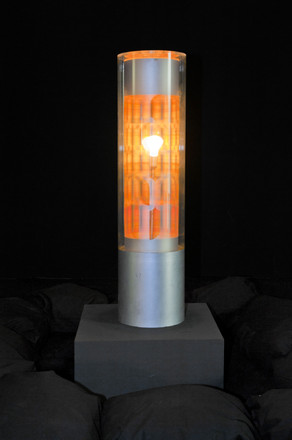A sound poetry pioneer, in 1961 Gysin also wrote the poem I Am That I Am. At a time when only scientists were taking an interest in innovative tools, Gysin was experimenting with nascent computer technology and magnetic tape as he pressed further down the trail blazed by his Permutations. Defying classification, he advocated a radically interdisciplinary approach, and was one of the earliest practitioners of multimedia performances. Brion Gysin’s works subvert reality with experiments combining the perceptual and the poetic. A true precursor, he continues to influence visual artists, musicians and writers today.
The Institut d’art contemporain presents Brion Gysin: Dream Machine, is the first retrospective in France of this British-Canadian artist (1916, Taplow, UK – 1986, Paris) designed by the New Musem, New York. On this occasion, over 300 of his drawings, books, paintings, photocollages, films, slides and sound installations have been brought together at IAC.
Brion Gysin, in collaboration with the mathematician Ian Sommerville, invented the Dreamachine (1961), a landmark in psychedelic experimentation. The focal point of this exhibition, the Dreamachine is a kinetic light-sculpture which, when revolving at a specific frequency, can induce visions in the subject, whose eyes are closed.
The Institute chose to present the Brion Gysin exhibition, with its historical character, within the framework of the Laboratory space brain. The experimental dimension of the artist's work, and especially the Dreamachine, a key work, corresponds with the issues of the Laboratory and feeds research with regards to both history and viewpoint.


